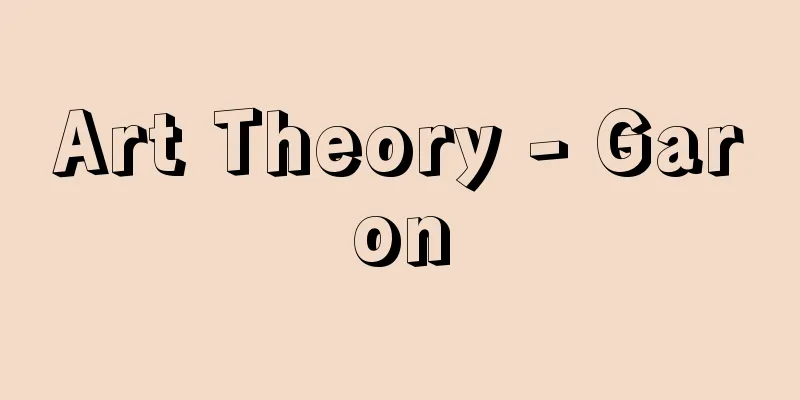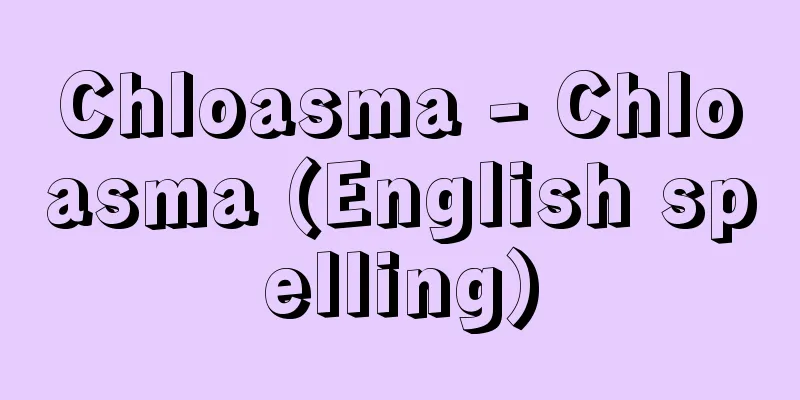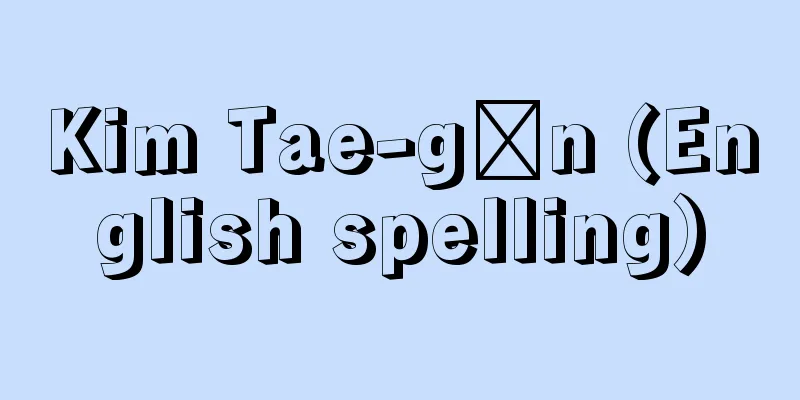Art Theory - Garon

|
Chinese or Japanese painting theory. The origins of painting theory in China are ancient, and fragmentary works could be found as far back as the Han dynasty, but the oldest coherent works are Gu Kaizhi's "Essay on Painting," "Records of Painting on Mount Taishan," and "Wei Jin Shengliu Painting Praise" from the Eastern Jin dynasty. During the Northern and Southern Dynasties, rather than discussing the paintings themselves, specific criticism of works was carried out under the name of "appraisal." Xie He's "Inventory of Ancient Paintings" from the Southern Qi dynasty is a representative example, and in particular it advocates the so-called Six Laws (the vitality of spirit, the use of brushwork in the form of bones, the representation of objects, the coloring of the corresponding classes, the management position, and the transfer of imitation) as the rules of painting, which had a great influence on Oriental painting until later generations. During the Tang dynasty, in addition to painting criticism, painting histories and biographies were written in the form of historical records. Zhang Yanyuan's "Records of Famous Paintings of the Past" is a valuable historical resource for learning about the achievements, works, and styles of Tang dynasty painters who have since been lost. Jing Hao, who lived during the Five Dynasties at the end of the Tang Dynasty, criticized Tang dynasty paintings and also painted himself, particularly discussing the ink techniques of landscape painting, and wrote "Records of the Brush Technique." This became the starting point for discussion of landscape painting in the Song and Yuan dynasties. Notable works from the Song dynasty include Huang Xiufu's Record of Famous Paintings of Yizhou, Guo Ruoxu's Journal of the Observations of Paintings, Deng Chun's Collection of Paintings, Guo Xi's Linquan Gaozhi, and Han Zhuo's Complete Collection of Landscapes and Watercolors. In addition to these, many literati painters compiled guides to appreciating works of art and painting guides. In the Yuan dynasty, Xia Wenyan's Zue Baojian is an excellent work of art history, while Tang's Huajian is well known as a critique of art. In addition, Huang Gongwang, one of the four great painters of the Yuan dynasty, wrote a brief summary of his own painting techniques and the experiences he had acquired in his book Shashunsui Jie, which had a great influence on Ming and Qing painters. In the early Qing dynasty, Wang Gai and others published the Mustard Seed Garden Painting Collection, which was an introductory book that compiled Chinese painting records, and Peiwenzhai's Calligraphy and Painting Collection, selected by imperial decree during the Kangxi era, compiled all previous painting theories and painting history. After the Qing dynasty, various artists continued to select and publish painting theories, but they ended up following traditional painting theories, and it can be said that nothing surpassing those from before the Song and Yuan dynasties was seen. In Japan, there are few collected art theories, and among the works on Japanese painting, there are only fragmentary conversation notes, but the oldest is Hasegawa Tohaku's "Ga no Setsu" (commonly known as "Tohaku Ga Setsu") from the Momoyama period. In the Edo period, works such as Kuwayama Gyokushu's "Ejito Higen" and "Gyokushu Gashu", and Tanomura Chikuden's "Takedasou Gayoroku" and "Yamanchu Jozetsu" were widely read. [Shinichi Nagai] Source: Shogakukan Encyclopedia Nipponica About Encyclopedia Nipponica Information | Legend |
|
中国または日本の絵画論。中国の画論のおこりは古く、断片的なものは漢代までにもみられたが、まとまったものとしては、東晋(とうしん)の顧愷之(こがいし)の『画論』『画雲台山記』『魏晋(ぎしん)勝流画賛(がさん)』がもっとも古い。南北朝になると絵画自体を論ずるよりも、品評と称して具体的に作品を批評することが行われた。南斉(なんせい)の謝赫(しゃかく)の『古画品録』はその代表的なものであり、とくにいわゆる六法(気韻生動、骨法用筆、応物象形、随類賦彩、経営位置、伝移模写)を絵画の法則として提唱、後世に至るまで東洋画に大きな影響を与えた。唐代になると画評に加え画史・画伝が史書の形式をもって書かれるようになった。張彦遠(ちょうげんえん)の『歴代名画記』は、すでに失われた唐代画家たちの活躍や作品、作風を知るうえでも貴重な史料的価値を有している。唐末五代の荊浩(けいこう)は、唐代絵画に批判の筆をとり、自らも画筆を振るい、とくに山水画の墨法を論じ、『筆法記』を著したが、これが発端となり、宋元(そうげん)代には山水画論が盛んになった。宋代の注目すべきものに黄休復の『益州名画録』、郭若虚(かくじゃくきょ)の『図画(とが)見聞誌』、鄧椿(とうちん)の『画継』、郭煕(かくき)の『林泉高致(りんせんこうち)』、韓拙(かんせつ)の『山水純全集』などがあり、このほかにも数多くの文人画家たちの手により、作品鑑賞のための手引書のたぐい、画譜などが編纂(へんさん)された。 元代では夏文彦(かぶんげん)の『図絵宝鑑』が画史として優れ、画評としては湯(とうこう)の『画鑑』が知られている。また画家として元代四大家の一人、黄公望はその著『写山水訣』に自己の画法と自ら体得した経験を略説し、明清(みんしん)の画家に大きな影響を与えた。清初における王概(おうがい)らの『芥子園(かいしえん)画伝』は中国画譜を集成した入門書的な性格をもち、康煕(こうき)勅選の『佩文斎(はいぶんさい)書画譜』はそれまでの画論・画史を集大成したもの。清代以後も諸家による画論の選述刊行は盛んになる一方であったが、伝統的な画論の踏襲に終わり、宋元以前のそれを抜くものはみられなかったといってよい。 日本では画論としてまとまったものは少なく、日本画に関するものでは、断片的な談話筆記であるが、桃山時代の長谷川等伯(はせがわとうはく)の『画之説』(通称『等伯画説』)が画談としてもっとも古い。江戸時代になってからは、桑山玉洲(ぎょくしゅう)の『絵事鄙言(ひげん)』『玉洲画趣』、田能村竹田(たのむらちくでん)の『竹田荘画友録』『山中人饒舌(じょうぜつ)』などが広く読まれた。 [永井信一] 出典 小学館 日本大百科全書(ニッポニカ)日本大百科全書(ニッポニカ)について 情報 | 凡例 |
<<: Calonne - Charles-Alexandre de Calonne
>>: Gallon - galon (English spelling)
Recommend
Valerius(?) Babrios
Date of birth and death unknown. A Greek fable po...
Positive economics - positive economics
A view of economic methodology. Economics uses log...
Sergei Semyonovich Uvarov
1786‐1855 A Russian scholar of classical literatur...
Arachniodes amabilis (Bl.) Tindale var. fimbriata K. Iwatsuki
An evergreen perennial fern of the Dryopteris fami...
Cranial nerve paralysis (palsy) (English)
...Motor paralysis is also classified based on th...
Pathos (English spelling)
A neuter noun (plural pathē) derived from the Gree...
Giant anchor sea cucumber - Giant anchor sea cucumber
It is a marine animal belonging to the phylum Ech...
Pososhkov, Ivan Tikhonovich
[Birth] 1652 Died: February 1, 1726. Petersburg. R...
Dacryostenosis
… [Diseases of the lacrimal system] (1) Lacrimal ...
Ocean Drilling Project
…The total number of drilling sites was 624. In t...
Dobby
…They disappear if you change their clothes, call...
Kolokol (English spelling)
The Bells. A Russian revolutionary newspaper from ...
MA (Time Series Analysis)
...Whether the ultimate goal of the analysis is p...
Araja, F. (English spelling) ArajaF
… In the 1730s, music began to be directly import...
Abdul Rahman - Abdul Rahman (English spelling)
He was the fifth king (Amir) of the Barakzai dyna...









![Kinneret [Lake] - Kinneret](/upload/images/67d0527c05657.webp)